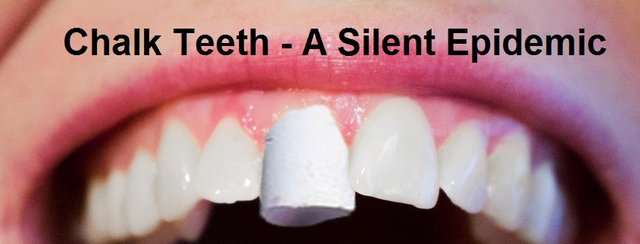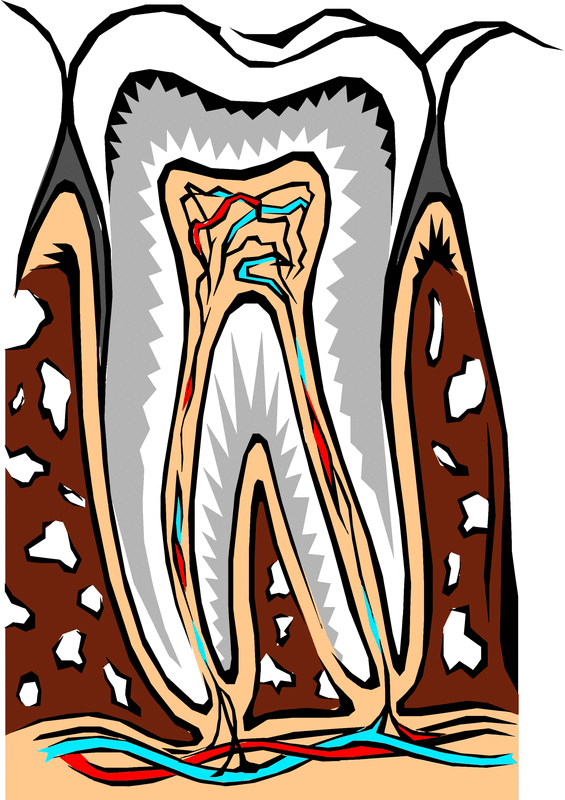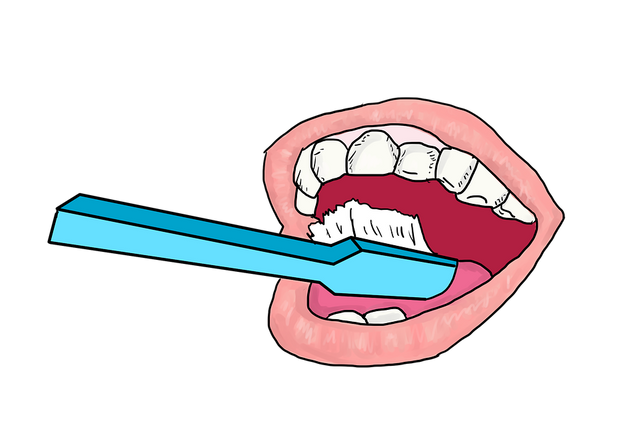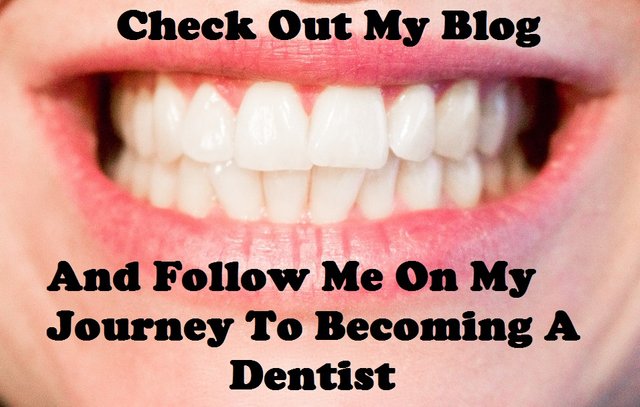Chalk Teeth: A Silent Epidemic - by an Aspiring Dentist
Welcome back! Today I will be writing about a dental abnormality with a curious name. This will also be my first #steemstem post and also my first bilingual post. I hope you enjoy and learn something today.
Willkommen zurück! Heute werde ich über eine Abnormalität der Zähne schreiben die einen witzigen Namen hat. Dies wird auch mein erster #steemstem, und auch mein erster zweisprachiger Post sein. Ich hoffe euch gefällt diese Post und das ihr etwas lernt. Den deutschen Teil findet ihr unter dem englischen.

What Are Chalk Teeth?
The cover picture is quite suggestive, but Chalk Teeth usually only affect the molars, which are the teeth in the back of your mouth. In scientific cycles Chalk Teeth, aka Chalky Teeth, are called molar hypomineralisation. We can split this word into three parts to make it clearer what it means:
- Molar: the molars in the back of your mouth, teeth you use to crush food
- Hypo: Greek preposition meaning under/below, in a medical context it often means a lack of something
- Mineralisation: certain metal ions provide stability to our teeth, these are referred to as minerals
So by looking at the scientific name we know that this disease evolves around a lack of minerals in the molars. Most commonly Chalky Teeth affect the molars, but there are variants of the disease that have some co-involvement of the canines (the pointy teeth) and incissors (front teeth). Typical symptoms include tooth aches and clearly differentiated discolorations and a "chalk like" appearance of the tooth. Chalk teeth is classified as a developmental dental defect. These defects, often called "D3s" (short for DDD), affect the teeth while they develop in the jaw of a child. There are various D3s, ranging from fluorosis to deformed teeth, but Chalk Teeth is one of the most common, and most costly D3s. Its prevalence is surprisingly high. High means that roughly 1 out of 6 children world wide are affected by Chalk Teeth. Why is this surprising? Well, let me ask you a question: Have you ever heard of Chalk Teeth or Molar Hypomineralisation? This disease has been flying under the radar for some time, which is surprising when you consider how frequently it occurs. Even dentists often miss to diagnose Chalk Teeth. In many situations Chalk Teeth are falsly diagnosed as normal caries.
A Little Background
Minerals, Teeth, Fluorosis - There have been some big words in this post already. Let me take a step back and give you some basics about our teeth. If you take one of your teeth out and cut it in half (this is not a challenge, don´t do it) and cut it in half, you can notice various tissues. There are two regions, the upper crown and the lower root. Characteristical of the crown is the very hard layer of enamel. Underneath the enamel we have what provides structure to our teeth, the so called dentin. The dentin surrounds are core which consists of pulp. I know, I know, I promised to clear up some big words and just gave me more. They are important, though, so let me give you a quick description of the new big words. We really need those for context so bear with me.
- Enamel: very hard protective layer, highly mineralized, cannot be restored by the tooth
- Dentin: hard and highly mineralized layer, contains proteins, can be restored by the tooth
- Pulp: very soft, consists of nerves, blood vessels and specialized cells

What Went Wrong?
As I have mentioned earlies, Chalk Teeth can appear creamy-yellowish. They lack the normal mineral content of healthy teeth and are weaker than normal teeth. This leads to an increased risk for caries and instability of the teeth. Some studies have reported a high protein content in the enamel of affected teeth. What causes these abnormalities?
This is the big question we still have to answer. Research has figured out when Chalk Teeth develop: during the maturation/hardening phase of the enamel. This has been figured out through animal studies. Researchers have investigated the role that childhood diseases play. Then amoxicillin, an antibiotic, was identified as a possible cause. Later genetic pre-disposition was discussed, as well as exposure to bisphenol A. The exact causes are not yet known.
At the moment it appears that there is a variety of factors at play. Certain factors need to be happening at a very specific time during the development of the enamel. The dominant opinion in the scientific community is that either childhood diseases or the medicine used to treat them, or both are the main causative agents of Chalky Teeth.
What Can You Do?


Was Sind Kreidezähne?
Ganz so wie auf dem Coverbild sehen Kreidezähne nicht aus. Meistens sind auch nicht die Schneidezähne sondern die Backenzähne betroffen. In wissenschaftlichen Kreisen wird diese Krankheit auch als Molare Hypomineralisation bezeichnet. Schauen wir uns mal die Bestandteile dieses Wortes an um etwas zu deren Bedeutung zu sagen.
- Molare: die Backenzähne
- Hypo: altgriechisch für unter, in der Medizin oft genutzt für Defizite
- Mineralisation: Minerale lagern sich in Bestandteile der Zähne ein
Wir wissen also nun dass ein Mineraldefizit in den Backenzähnen für diese Krankheit verantwortlich ist. Meistens sind nur die Backenzähne betroffen, doch es gibt auch einige Varianten diese Krankheit bei denen die Schneidezähne und Eckzähne auch betroffen sind. Zu den typischen Symptomen zählen Zahnschmerzen und klar abgegrenzte Flecken auf den betroffenen Zähnen. Diese sind oft zu weiß oder cremig gelb. Kreidezähne zählen zu den Developmental Dental Defects, sind also Erkrankungen der Zähne die während der Entwicklung des Zahnes auftreten. Diese Defekte werden oft als D3s bezeichnet und beinhalten einige Krankheiten wie Fluorose, Missbildungen von Zähnen und auch Kreidezähne, welche am häufigsten und am kostspieligsten sind. Kreidezähne sind überraschend häufig. Ungefähr jedes 6. Kind leidet an dieser Krankheit. Das überraschende ist das wahrscheinlich keiner von euch schon mal von dieser Krankheit gehört hat. Viele Zahnärzte kennen diese auch nicht, und diagnostizieren sie oft falsch als gewöhnlichen Karies.
Ein Wenig Hintergrung
Minerale, Zähne, Fluorose – In diesem Post gab es bereits einige große Wörter. Damit ihr Kreidezähne besser verstehen könnt werde ich nun versuch etwas Hintergrundwissen zu teilen. Wenn ihr einen eurer Zähne entfernt (tut dies bitte nicht, es ist keine Challenge!) und diesen in zwei Teile zerschneidet solltet ihr zwei unterschiedliche Regionen sehen.

Was Ist Falsch Gelaufen?
Wie bereits erwähnt sehen Kreidezähne nicht normal aus. Sie haben auch nicht den normalen Mineralgehalt von gesunden Zähnen and sind schwächer als gesunde Zähne. Das Kariesrisiko ist erhöht und Zähne können schneller brechen. Manche Studien fanden einen erhöhten Proteingehalt in Kreidezähnen. Was ist der Grund für diese Veränderungen?
Das ist die große Frage die noch auf ihre Antwort wartet. Forscher fanden heraus in welcher Zeit sich Kreidezähne bilden können: während das Enamel reift und härtet. Dies wurde in Tierstudien herausgefunden. Eine der frühen Thesen war dass Krankheiten in der Kindheit Kreidezähne auslösen können. Später dachte man es wären Antibiotika wie Amoxicillin. Später wurden genetische Prädispositionen untersucht wie auch der Einfluss von Chemikalien wie Bisphenol A. Jedoch weiß man immer noch nicht was der Auslöser ist.
Es scheint dass es mehrere Faktoren gibt die zusammen zu der richtigen Zeit in Effekt sein müssen. Das macht die Prävention schwierig. Momentan werden Kinderkrankheiten und die Medikamente die zur Behandlung eingesetzt werden als Hauptgründe gesehen. Damit ist das Rätsel jedoch noch lange nicht gelöst.
Was Kannst Du Tun?

Sources - Quellen
The intro picture was made using GIMP and two Public Domain pictures. The first one was by Efraimstochter (Link) and the second by Kjerstin_Michaela (Link).
The first picture comes from GoodFreePhotos and has been published as a CC0 picture. The last pictures is by LillyCantabile, who published this picture on pixabay under the CC0 licence. The flag is by TheDigitalArtist from Pixabay under CC0. The outro picture is by Kjerstin_Michaela.
Das Coverbild habe ich mit zwei CC0 Bildern und dem Program GIMP produziert. Alle Bilder sind CC0 lizensiert. Das erste stammt von GoodFreePhotos. Das letzte kommt von LillyCantabile und die Fahne stammt von TheDigitalArtist. Die Links zu den Lizensen findet ihr direkt hier drüber.
For this post I have read several posts on the internet. I did use Wikipedia for definition purposes.
Ich habe verschiedene Quellen für diesen Post genutzt. Wikipedia habe ich für Definitionen der folgenden Wörter benutzt. Die Links führen zur englischen Wiki.
The information about Chalk Teeth I drew from scientific articles. I want to highlight one specific review article titled "Molar Hypomineralisation: A Call to Arms for Enamel Researchers" (Link). This review has been very helpful. Its language is not too technical, and I believe that most people can understand it. It is free! I would also recommend visiting the website of the D3 Group (Link). It is a corporation run by people from several countries and aims at raising awareness of D3s, among patients, health-care providers and researchers.
Die Informationen über Kreidezähne have ich in wissenschaftlichen Artikeln gefunden. Ich möchte hier einen besonders hervorheben: "Molar Hypomineralisation: A Call to Arms for Enamel Researchers" (Link). Dieser kostenlose Review war sehr hilfreich beim Schreiben dieses Posts. Es ist sprachlich recht gut verständlich (allerdings auf Englisch) und kann auch von Laien verstanden werden. Ich würde außerdem die Internetpräsenz der D3 Gruppe empfehlen. Diese Kooperation verschiedener Experten aus verschiedenen Ländern versuch die Öffentlichkeit und Zahnärzte auf Kreidezähne aufmerksam zu machen.
Here are my scientific sources. Hier meine wissenschaftlichen Quellen.
- "What Is the Critical pH and Why Does a Tooth Dissolve in Acid?" by Dawes
- "Surface integrity governs the proteome of hypomineralized enamel" by Magnum et al.
- "Protein content of molar-incisor hypomineralisation enamel" by Farah
- "Pre- and Postnatal Determinants of Deciduous Molar Hypomineralisation in 6-Year-Old Children. The Generation R Study" by Elfrink et al.
- "Amoxicillin may cause molar incisor hypomineralization" by Laisi et al.
- "Enamel defects reflect perinatal exposure to bisphenol A" by Jedeon et al.
- "Molar hypomineralization: What is the US experience?" by Hubbard
- "Treatment decisions on Molar-Incisor Hypomineralization (MIH) by Norwegian dentists – a questionnaire study" by Kopperud et al.
- "Essentiality of Early Diagnosis of Molar Incisor Hypomineralization in Children and Review of its Clinical Presentation, Etiology and Management" by Garg et al.
As you can see, Chalk Teeth are very common, yet not well understood. We need more research and more collaborations between dentists, doctors and researchers. This is a costly disease that can affect individuals by making them feel uncomfortable with the way their teeth look, causing them physical pain and increasing the risk of caries. Chalk Teeth need to get more attention and education has to train dentists to diagnose this disease. Thank you for reading my post. I hope that I was able to teach you something. As a pursuing dentist I enjoyed learning about this disease which I have never heard of before. I hope you also found this to be interesting. See you next time!
Wie ihr sehen könnt sind Kreidezähne weit verbreitet, werden aber noch immer nicht gut verstanden. Wir brauchen mehr Forschung und Zusammenarbeit zwischen Zahnärzten, Ärzten und Forschern. Diese Krankheit fügt betroffenen Schmerzen bei und beeinflusst deren Selbstwahrnehmung. Das Risiko von Karies ist stark erhöht was höhere Gesundheitsausgaben mit sich bringt. Kreidezähne sollten mehr Aufmerksamkeit bekommen. Die zahnmedizinische Ausbildung muss hier nachgebessert werden. Vielen Dank dass ihr diesen Post gelesen habt. Ich hoffe ihr habt etwas dazu gelernt. Als angehender Zahnarzt fand ich die Nachforschungen zu diesem Post sehr interessant. Ich hoffe ihr fandet disesen Post auch interessant. Bis zum nächsten Mal!

Good post. Have an upvote.
Could the problem be lack of vitamin D? People do not go outside much anymore so vitamin is a common deficit in the general population these days.
I wrote a style guide for STEM posts that you might find interesting (or not, up to you): Procrastilearner's Style Guide For Science and Technology Posts.
I noticed that you did not provide a credit or source for your images. The Steemstem curators might downvote you for that (just a friendly heads up).
Thank you for your commen, @procrastilearner!
I have not heard that vitamin D is an issue here. This disease is complex and I can imagine it playing a role. But the causes are not known.
I will check out your guide and see if I can find something helpful! Thank you for the suggestion.
The image sources are in the "Sources" section, including author name and link to license. I can post the links under the pictures in addition to the sources section if that is better.
Thank you for your upvote and help!!
Für den ersten Post nicht schlecht, ein paar Typos haben sich (zumindest in der deutschen Version eingeschlichen und Markdown scheint nicht ganz zu funktionieren (ich sehe die Unterstriche bei den Fachbegriffen, die eigentlich wohl kursiv sein sollten).
Interessantes Thema, das du da anreißt. Hat die Ursachenforschung bislang irgend einen Hinweis gebracht? Wie ist man überhaupt auf die Idee gekommen, dass BPA da eine Rolle spielen könnte und hat sich das erhärtet?
Für mich hätte es ruhig noch ein bisschen in die Tiefe gehen können, aber wie gesagt, guter Post! Vote kommt.
Vielen Dank für dein super Feedback @sco!! Ich geh nochmal durch den Text. Wahrscheinlich hab ich mich zu sehr darauf gefreut endlich "Post" zu drücken. :D
Eigentlich alle genannten Ursachen sind noch als Hypothesen zu sehen. Es gibt noch keine eindeutigen Hinweise. Zum Beispiel gibt es eine Gruppe die denkt das bestimmte Proteine sich in dem Enamel anlagern und dadurch die Krankheit auslösen. Dann gibt es Gruppen die herausgefunden haben dass dieses Protein keinen Schaden anrichtet.
Ähnlich sieht es beim BPA aus. Es muss zu einer ganz bestimmten Zeit in der Entwicklung des Zahns da sein, sonst bewirkt es keine Änderungen. Außerdem wurde das zumeist in Tierversuchen untersucht und man weiß nicht ob man dass auf den Menschen übertragen kann. Danke nochmal für dein Feedback!!
Congratulations @tystnad! You have completed the following achievement on Steemit and have been rewarded with new badge(s) :
Click on the badge to view your Board of Honor.
If you no longer want to receive notifications, reply to this comment with the word
STOPDo not miss the last post from @steemitboard:
SteemitBoard World Cup Contest - The results, the winners and the prizes
Hi @tystnad!
Your post was upvoted by utopian.io in cooperation with steemstem - supporting knowledge, innovation and technological advancement on the Steem Blockchain.
Contribute to Open Source with utopian.io
Learn how to contribute on our website and join the new open source economy.
Want to chat? Join the Utopian Community on Discord https://discord.gg/h52nFrV
Congratulations @tystnad! You received a personal award!
You can view your badges on your Steem Board and compare to others on the Steem Ranking
Vote for @Steemitboard as a witness to get one more award and increased upvotes!